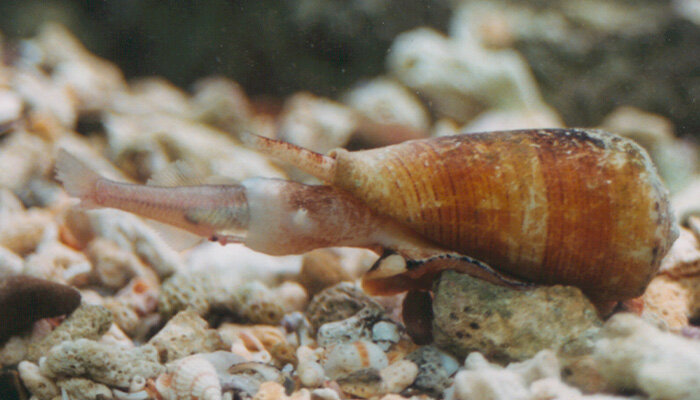A breakthrough has been made by researchers at the University of Queensland. They have successfully raised deadly cone snails in a laboratory aquarium for the first time, providing new potential for drug development with the discovery of previously unknown venoms. The results of their study have been published in the journal Nature Communications.
Professor Richard Lewis, along with Dr. Aymeric Rogalski and Dr. Himaya Siddhihalu Wickrama Hewage from UQ’s Institute for Molecular Bioscience, focus their research on venoms as therapeutics. They found significant differences in the diet, behavior, and toxicity of the Conus magus cone snail across its lifecycle.
Professor Lewis explains, “Juvenile cone snails use a different cocktail of venoms than adult snails to kill their prey.”
This discovery opens up vast possibilities for the exploration of these unique venom molecules as potential leads for drug development. While previous success has been seen in the development of pain medications using venom molecules, further research will determine if they have therapeutic potential for other disease classes.
The researchers were also surprised to find that juvenile cone snails have a different diet than the adults. Instead of feeding on fish like the adults, juveniles only eat polychaete worms. They have a specific hunting technique called “sting and stalk” where they jab the worm with a harpoon-like structure and inject it with venom to subdue it. They then slowly stalk the worm and consume it.
During the larvae stage, cone snails feed on a type of microalgae before their metamorphosis into half-millimeter-long juveniles. Prior to this study, little was known about the early life stages of these snails due to the challenges of finding and rearing their eggs, larvae, and juveniles in an aquarium.
Thanks to the efforts of Dr. Rogalski, who undertook the challenge during his Ph.D., the researchers now have a sustainable system for rearing cone snails in a controlled environment. This breakthrough enables further studies on the life cycle and venoms of the juveniles.
More information:
Aymeric Rogalski et al, Coordinated adaptations define the ontogenetic shift from worm- to fish-hunting in a venomous cone snail, Nature Communications (2023). DOI: 10.1038/s41467-023-38924-5
Citation:
New venom discovery from deadly cone snails (2023, June 29)
retrieved 29 June 2023
from https://phys.org/news/2023-06-venom-discovery-deadly-cone-snails.html
This document is subject to copyright. Apart from any fair dealing for the purpose of private study or research, no
part may be reproduced without the written permission. The content is provided for information purposes only.
Denial of responsibility! TechCodex is an automatic aggregator of the all world’s media. In each content, the hyperlink to the primary source is specified. All trademarks belong to their rightful owners, and all materials to their authors. For any complaint, please reach us at – [email protected]. We will take necessary action within 24 hours.

Jessica Irvine is a tech enthusiast specializing in gadgets. From smart home devices to cutting-edge electronics, Jessica explores the world of consumer tech, offering readers comprehensive reviews, hands-on experiences, and expert insights into the coolest and most innovative gadgets on the market.


